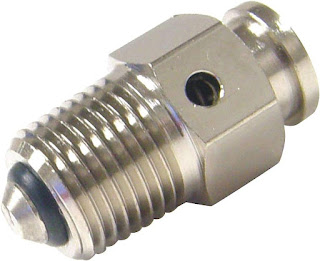Guide: How to Choose Right Air Fittings
Pressure air fittings are required in any kind of pressurized gas system to link together in sections of tubing, pipe, or hose. They have tighter seals and lower pressure than hydraulic fittings. They are basically found in pneumatic instrumentation and logic control systems.
Although fittings symbolize overall pneumatic system design and are important for all elements. These fittings are together with their pipes, hoses, and tubes and connect all the major components together. Hence, they have a major influence on the efficiency, safety, and energy consumption of the entire system. To know how to choose the right one and all about suiting the materials to the job and its environment, in order to break down the process, you need to identify first.
- In such a specific environment in which your equipment will be working.
- The required air pressure of your equipment.
- Approvals that may be needed for equipment and its components.
- The type and size of tube you may require.
- The type and size of threads your fittings will need.
- The material from which fitting is made.
- Working Environment: The design of Pisco Fittings should allow the free flow of required air or gas without any opportunity in pressure. Pipes and hoses are as simple as possible so that no energy is lost in the air’s passage through the system. When choosing it, some key environmental factors must also be taken into account.
- Operating temperature
- Contaminants
- Physical Space
- Air Pressure or PSI Spec: Pneumatic Air Fittings are often rated for operational pressure ranges that are based on specifications of the equipment and designed to do it. The pressure range is the one at which a pneumatic system will generally run at its optimum level of performance. If the current operating pressure is not maintained, it causes the whole system to fail and is likely to leak, break or lose the pressurized seal.
- Fitting Material: When deciding to choose the correct Pisco Fittings for your application. You should examine the different materials that are commonly used in order to find out their physical properties and reaction. For example temperature changes in :
- Aluminum
- Brass
- Stainless Steel
- Plastic
- Composites
- Approvals: In such applications, you may need to install a fitting to industry or safety standards. In these environments, the requirement of air purity is very strict and may not allow for the use of compressors using oil-based lubricants. Bacteria and microorganisms are also sources of major concern. These standards administrate all aspects of compressed air installation, from thermometers to pressure gauges, and from pipe supports to pipework. It is really important for the safety of persons.
Wrapping Up!
Das Services Inc. is one of the largest and the most successful providers of Pisco products like Air Fittings, Fittings, and Pressure Sensors in the USA. They have been running their business in the industry for more than 3 decades. They are proud to provide superior quality service to their clientele.




Comments
Post a Comment